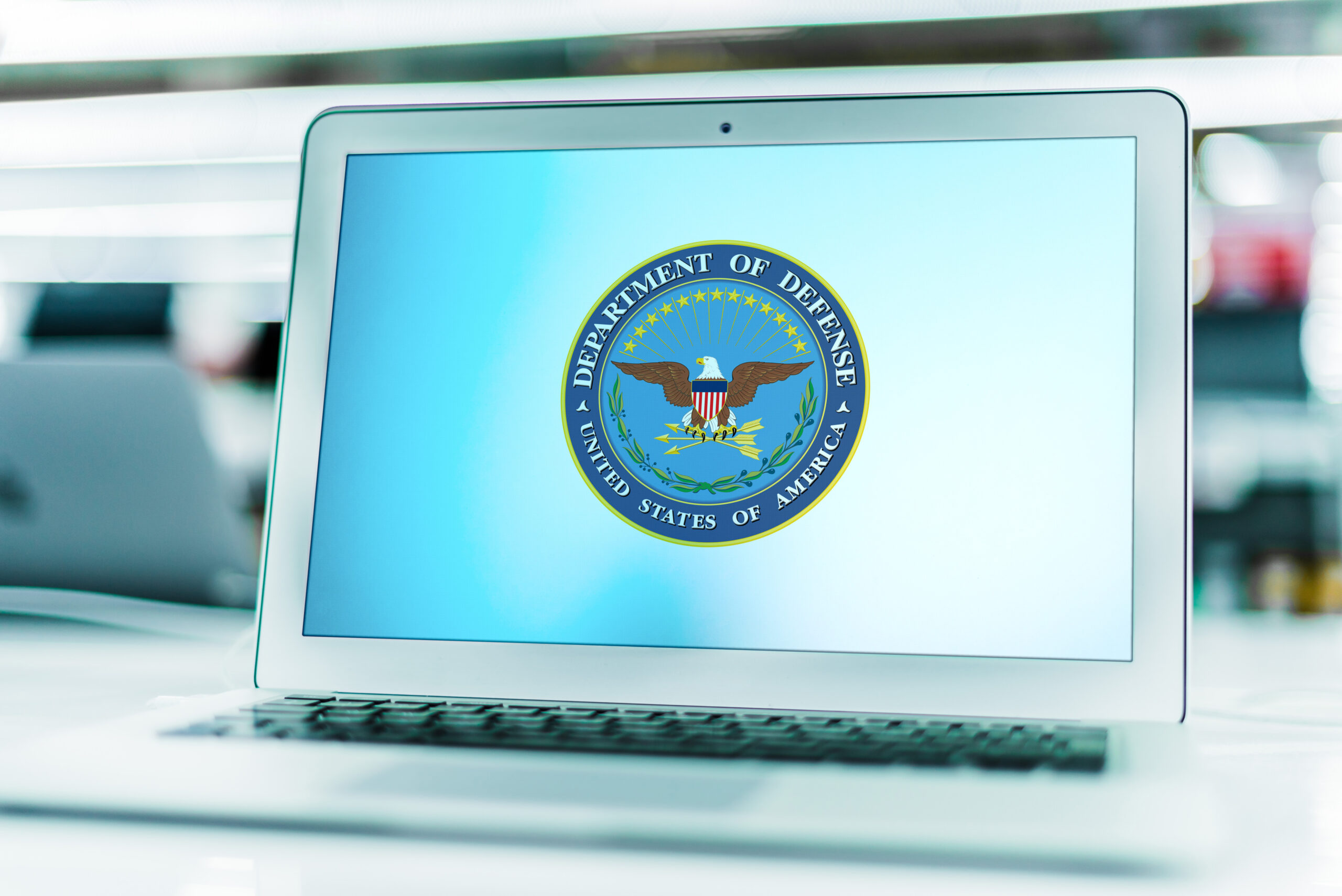A Guide to Marking CUI Documents for Businesses
CUI stands for Controlled Unclassified Information. This is information that requires safeguarding or dissemination controls consistent with applicable law, regulations, and government-wide policies.
This might sound confusing, but it’s essentially sensitive non-secret information that the United States federal government needs to safeguard. While not classified national security information, in order to obtain access to CUI an individual must still have a lawful government purpose.
Here’s why businesses should care about CUI:
- Government contracts: Many government contracts involve CUI. Knowing how to protect it is crucial for the Cybersecurity Maturity Model Certification (CMMC).
- Supply chain involvement: Businesses involved in government supply chains might unknowingly interact with CUI. This means they need to understand and apply proper safeguarding measures.
- Cybersecurity breaches: Exposing CUI in a breach can lead to hefty fines, reputational damage, and legal action.
Though not top-secret, mishandling these unclassified documents poses significant risks to businesses. Here’s a closer look at the potential penalties:
Financial Losses:
- Contract termination: Companies can lose government contracts if they fail to protect CUI. This results in significant lost revenue and potential future blacklisting.
- Fines and penalties: Breaches involving CUI can trigger hefty fines from federal agencies.
- Lawsuits and settlements: Individuals or organizations affected by a CUI breach may sue for damages. This leads to expensive settlements and legal fees.
- Cybersecurity remediation: Recovering from a CUI-related breach can be costly. Some of the costs include IT infrastructure repairs, data restoration, and forensics investigations.
Reputational Damage:
- Loss of trust: News of a CUI breach can erode public trust and damage your business’s reputation. This impacts existing customer relationships and hinders future business opportunities.
- Negative media coverage: Media attention surrounding a CUI breach can be damaging, portraying your business as irresponsible and compromising future partnerships.
Legal Penalties:
- Criminal charges: Depending on the specific circumstances, individuals responsible for mishandling CUI can face criminal charges and imprisonment.
- Civil lawsuits: In addition to fines, government agencies may pursue civil lawsuits against your business for CUI breaches.
- Debarment: Severe cases can lead to debarment, excluding your business from obtaining government contracts for a designated period.
Beyond these direct consequences, mishandling CUI can also have ripple effects:
- Operational disruptions: Investigating and remediating a breach can significantly disrupt your business operations.
- Decreased investor confidence: News of a CUI breach can negatively impact investor confidence.
In conclusion, mishandling CUI carries a heavy price tag in terms of financial losses, reputational damage, and legal consequences. Securing CUI goes beyond meeting regulations, it’s smart business for long-term success.
What should you consider Controlled Unclassified Information?
There are two types of CUI:
- Basic CUI: This type of CUI requires safeguarding, but it doesn’t have specific handling rules beyond those outlined in government-wide policies. Examples include administrative information, logistics data, and procurement details.
- Specified CUI: Specified CUI is a subset of basic CUI with stricter handling requirements. Though unclassified, specific laws, regulations, or policies require additional management practices beyond baseline CUI safeguards. Examples include export control information or certain types of financial data
Components of a CUI Banner Marking:
If you see classified information or controlled unclassified information, it should be clearly marked. At the time of creation CUI material should have a banner marking at the top and bottom of each page. Banner markings identify the type of CUI data within the document. It includes the following components:
- Control Marking: This indicates the type of CUI (CUI for Basic, CUI//REL TO for Specified).
- Category Marking(s): This identifies the specific categories or subcategories of CUI contained in the document (e.g., CUI//COM). Slashes separate multiple categories.
- Dissemination Controls: These specify how to share the document. For example, “FOR GOVERNMENT USE ONLY” or “NO DISSEMINATION OUTSIDE DOD.”
CUI Markings Examples:
Report:
(U) (U)
CUI//COM//FOUO CUI//COM//FOUO
**Title of Report**
…
(U) (U)
Spreadsheet:
(U) (U)
CUI//CPR//NOFORN CUI//CPR//NOFORN
**Spreadsheet Title**
…
(U) (U)
Email:
(U) (U)
CUI//FOR OFFICIAL USE ONLY
Subject: CUI Information – Project Update
…
(U) (U)
Important Note: These are just basic examples. The marking requirements will depend on the type of CUI and the applicable rules. Always consult the latest CUI marking guidance from the US government for accurate and up-to-date information.
Marking Your Documents:
Marking Controlled Unclassified Information (CUI) is crucial for businesses, and accurate marking is key. Here’s a step-by-step guide to help you:
Identifying CUI:
- Consult CUI Registry: Familiarize yourself with the categories and subcategories of CUI listed in the official CUI Registry.
- Review Government Contracts: Check specific regulations and requirements listed in your government contracts related to CUI handling and marking.
- Analyze Document Content: Examine your documents carefully. Look for information that:
- Meets CUI categories (e.g., critical infrastructure, technical data, export-controlled information).
- Originates from government sources marked as CUI.
- Meets criteria for Specified CUI due to its sensitivity (e.g., personal identifiable information, financial data).
Marking CUI Documents:
- Follow Regulations: Refer to the latest NIST Special Publication 800-171 and agency-specific guidance for marking requirements.
- Determine Marking Type: Identify if the CUI is Basic or Specified based on regulations and information sensitivity.
- Apply Banner Markings:
- Use the approved format with control marking (“CUI” or “CUI//REL TO”).
- Include relevant category/subcategory markings (e.g., CUI//COM, CUI//CPR).
- Add dissemination controls as required (“FOR OFFICIAL USE ONLY,” etc.).
- Place markings consistently at the top and bottom of each page.
- Portion Markings: Consider using portion markings to identify specific sections containing CUI within a document, especially if mixed with unclassified information.
Best Practices:
- Consistency is Key: Ensure all CUI documents within your organization follow the same marking format and terminology.
- Training & Awareness: Train employees handling CUI on identification, marking, and safeguarding procedures.
- Regular Reviews: Conduct regular audits to ensure consistent and accurate marking across documents.
- Seek Guidance: Contact relevant government agencies or consultants for specific questions or complex situations.
Common Challenges & Mistakes:
- Incorrect CUI Identification: Misunderstanding CUI categories and mistaking unclassified information for CUI.
- Inconsistent Markings: Variations in format, terminology, or placement of markings within documents.
- Missing Markings: Failing to mark documents containing CUI or using outdated markings.
- Over Classifying Information: Marking information as CUI when it doesn’t meet the classification criteria.
- Lack of Documentation: Not maintaining records of marking decisions and rationale, especially for Specified CUI.
Remember: Accurate CUI marking protects sensitive information, safeguards your business, and ensures compliance with regulations. Following these steps and best practices helps you find and mark CUI documents safely.
Additional Resources:
Navigating the world of CUI marking can be complex, but staying informed and following best practices is crucial. Here are some helpful resources to guide you:
Government Websites:
- National Archives and Record Administration (NARA) CUI Website:
- Provides comprehensive information on CUI, including the CUI Registry, marking guidance, and training materials.
- Department of Defense (DoD) CUI Program Website:
- Specifically caters to Department of Defense contractors, offering resources tailored to their CUI needs.
- National Institute of Standards and Technology (NIST):
- Publishes Special Publication 800-171, the core standard for CUI protection.
Training Materials:
- US National Archives CUI Training:
- Offers free online training modules on various aspects of CUI marking.
- DoD CUI Marking Job Aids and Handbook:
- Provides downloadable resources designed for DoD personnel and contractors.
- Center for Development and Security Education (CDSE):
- Offers various courses and resources on CUI and classified information.
Conclusion:
Imagine a vault filled with sensitive information, vital to protecting both your business and national security. That’s what CUI represents, and accurate CUI marking is the lock on that vault.
Inconsistent or inaccurate CUI marking can have severe consequences:
- Financial losses: Breaches, fines, and contract terminations can hit your bottom line hard.
- Reputational damage: News of mishandled CUI can erode public trust and hinder future collaborations.
- Legal trouble: Criminal charges and civil lawsuits can add further burden and risk.
Implementing a robust CUI marking program is an investment in your future. It shows your commitment to information security, compliance, and responsible data handling. By establishing clear and consistent practices, you can:
- Minimize risks: Reduce the potential for accidental breaches and legal entanglements.
- Increase efficiency: Streamline workflows and ensure everyone understands CUI protocols.
- Boost trust and reputation: Demonstrate your dedication to responsible information management.
Remember, CUI marking is an ongoing process. Regularly review your practices, stay informed about regulations, and train your employees to recognize and handle CUI effectively.
Does navigating the complexities of CUI marking and CMMC compliance leave you feeling overwhelmed? Don’t do it alone! The FirstCall Compliance Team is here to help.
We offer custom CUI marking solutions to fit your needs, helping you protect your business and stay compliant. Contact us to discuss your challenges and achieve success in the changing CUI environment.
FAQ About CUI:
- Can CUI be emailed if encrypted?
Yes, you can email CUI as long as you encrypt it with FIPS 140-2 validated encryption.
- Who is responsible for applying CUI markings and dissemination controls?
For CUI material, the authorized holder is responsible for determining the CUI designation indicator.
- What is best practice for protecting Controlled Unclassified Information?
Fully implementing the NIST SP 800-171 standard.
- Is proprietary data CUI?
Yes, if created in performance of a government contract.
- Where do I find the DoD Mandatory Controlled Unclassified Information Training?
You can find it here.
- What is the ISOO CUI Registry?
That is the government wide CUI repository with guidance for CUI policy and practice.





